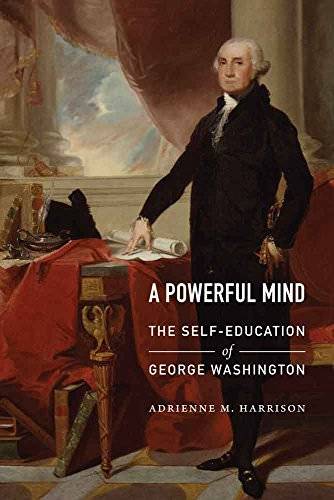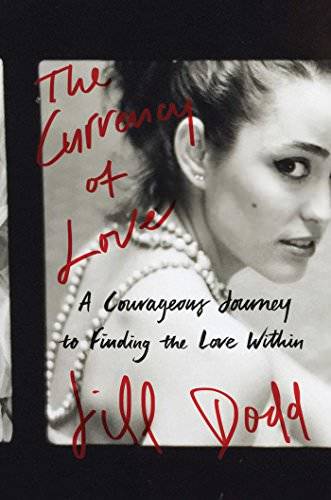The Marxist and the Movies: A Biography of Paul Jarrico by Larry Ceplair
A Powerful Mind: The Self-Education of George Washington by Adrienne M. Harrison
Prince Harry: The Inside Story by Duncan Larcombe
The Lives of Dillon Ripley: Natural Scientist, Wartime Spy, and Pioneering Leader of the Smithsonian Institution by Roger D. Stone
The Currency of Love: A Courageous Journey to Finding the Love Within by Jill Dodd
The Marxist and the Movies: A Biography of Paul Jarrico by Larry Ceplair
As part of its effort to expose Communist infiltration in the United States and eliminate Communist influence on movies, from 1947–1953 the House Committee on Un-American Activities subpoenaed hundreds of movie industry employees suspected of membership in the Communist Party. Most of them, including screenwriter Paul Jarrico (1915–1997), invoked the Fifth Amendment and refused to answer questions about their political associations. They were all blacklisted.
In The Marxist and the Movies, Larry Ceplair narrates the life, movie career, and political activities of Jarrico, the recipient of an Oscar nomination for his screenplay for Tom, Dick and Harry (1941) and the producer of Salt of the Earth (1954), one of the most politically besieged films in the history of the United States. Though Jarrico did not reach the upper eschelon of screenwriting, he worked steadily in Hollywood until his blacklisting. He was one of the movie industry’s most engaged Communists, working on behalf of dozens of social and political causes. Song of Russia (1944) was one of the few assignments that allowed him to express his political beliefs through his screenwriting craft. Though MGM planned the film as a conventional means of boosting domestic support for the USSR, a wartime ally of the United States, it came under attack by a host of anti-Communists.
Jarrico fought the blacklist in many ways, and his greatest battle involved the making of Salt of the Earth. Jarrico, other blacklisted individuals, and the families of the miners who were the subject of the film created a landmark film in motion picture history. As did others on the blacklist, Jarrico decided that Europe offered a freer atmosphere than that of the cold war United States. Although he continued to support political causes while living abroad, he found it difficult to find remunerative black market screenwriting assignments. On the scripts he did complete, he had to use a pseudonym or allow the producers to give screen credit to others. Upon returning to the United States in 1977, he led the fight to restore screen credits to the blacklisted writers who, like himself, had been denied screen credit from the late 1940s to the mid-1960s.
Despite all the obstacles he encountered, Jarrico never lost his faith in the progressive potential of movies and the possibility of a socialist future. The Marxist and the Movies details the relationship between a screenwriter’s work and his Communist beliefs. From Jarrico’s immense archive, interviews with him and those who knew him best, and a host of other sources, Ceplair has crafted an insider’s view of Paul Jarrico’s life and work, placing both in the context of U.S. cultural history.
A Powerful Mind: The Self-Education of George Washington by Adrienne M. Harrison
His formal schooling abruptly cut off at age eleven, George Washington saw his boyhood dream of joining the British army evaporate and recognized that even his aspiration to rise in colonial Virginian agricultural society would be difficult. Throughout his life he faced challenges for which he lacked the academic foundations shared by his more highly educated contemporaries. Yet Washington’s legacy is clearly not one of failure.
Breaking new ground in Washington scholarship and American revolutionary history, Adrienne M. Harrison investigates the first president’s dedicated process of self-directed learning through reading, a facet of his character and leadership long neglected by historians and biographers. In A Powerful Mind, Harrison shows that Washington rose to meet these trials through a committed campaign of highly focused reading, educating himself on exactly what he needed to do and how best to do it. In contrast to other famous figures of the revolution—Thomas Jefferson, John Adams, Benjamin Franklin—Washington did not relish learning for its own sake, viewing self-education instead as a tool for shaping himself into the person he wanted to be. His two highest-profile and highest-risk endeavors—commander in chief of the Continental Army and president of the fledgling United States—are a testament to the success of his strategy.
Prince Harry: The Inside Story by Duncan Larcombe
Prince Henry of Wales has emerged as the unexpected jewel in the crown of the modern British monarchy. Despite his unruly antics, for which he’s made headlines all over the world, Harry’s popularity rivals that of the Queen herself. Heartthrob and loveable rogue, he has won the public’s heart.
Duncan Larcombe’s insightful and highly entertaining biography of the rebellious royal recalls Harry’s Eton days, his military career and his tempestuous love life. Despite a string of exploits (not forgetting the notorious Nazi fancy dress incident), Harry has a mysterious gift. With a twinkle in his eye and natural charm in abundance, he can seemingly withstand even the most scandalous of media storms.
Since his military career has ended, all eyes are on Harry wondering what life, career and love have in store for the maverick prince. This is the inside story of how the cheeky teenager has grown and matured into a respected soldier, charitable fundraiser and national figurehead who still retains his reputation as the most entertaining resident of Buckingham Palace.
The Lives of Dillon Ripley: Natural Scientist, Wartime Spy, and Pioneering Leader of the Smithsonian Institution by Roger D. Stone
A Yale-educated Renaissance man, S. Dillon Ripley was a “courtly, determined, hugely ambitious, energetic, funny, and colorful ornithologist, conservationist, and cultural standard-bearer” who led the Smithsonian Institution for twenty years, during its greatest period of growth. During his watch, from 1964 to 1984, the SI added eight new museums and seven new research centers and began publication of the Smithsonian magazine. It was Ripley’s vision that transformed “the nation’s attic” from a dusty archive to a vibrant educational and cultural institution, just as he had transformed Yale’s Peabody museum before it.
Prior to his career at the SI, and running parallel with it for the rest of his life, was Ripley’s work as an ornithologist, begun in New Guinea in the 1930s, continued through his PhD from Harvard in 1943, and culminating in his landmark thirty-year project documenting the bird life of India. His lifelong passion for ornithology led him to positions of leadership in worldwide nature conservation.
In the midst of these endeavors he was recruited in 1944 to the Office of Strategic Services, a Yalie club at the outset that became the forerunner of the modern CIA. Posted to Ceylon, he recruited and ran agents who reported from and infiltrated Japanese-held Southeast Asia.
Roger D. Stone worked with Ripley on the board of the World Wildlife Fund. He has access to the Ripley family’s archives and photos, as well as to the voluminous archives at the Smithsonian and the National Archives, and to over forty hours of transcribed interviews, conducted with Ripley at the Smithsonian.
The Currency of Love: A Courageous Journey to Finding the Love Within by Jill Dodd
In this courageous and inspiring memoir about personal freedom and spiritual empowerment, Jill Dodd “writes earnestly and refreshingly about learning many of life’s more difficult lessons the hard way” (Kirkus Reviews) through her journey from Paris model to Saudi billionaire’s harem wife to multi-million dollar business entrepreneur.
In the 1980s, Jill Dodd determined that her ticket out of an abusive home was to make it as a top model in Paris. Armed with only her desire for freedom and independence, she embarks on an epic journey that takes her to uncharted territory—the Parisian fashion industry with all its beautiful glamour and its ugly underbelly of sex, drugs, and excess. From there, Jill begins an eye-opening adventure that includes trips to Monte Carlo, sexual exploitation, and falling in love with one of the richest men in the world, agreeing to become one of his wives—until she finds the courage to walk away from it all and rebuild her dreams.
The Currency of Love is a raw, honest, and inspiring portrait of a young woman’s struggles and triumphs from fashion model to Saudi billionaire’s pleasure wife to founder and creator of global fashion line, ROXY. This modern memoir with a feminist fairy tale twist reveals how one woman chose to live her life without forfeiting her independence, ambition, creative expression, and free spirit, all while learning one invaluable lesson: nothing is worth the sacrifice of her integrity, inner peace, and spirit.
 1 / 5
1 / 5 2 / 5
2 / 5 3 / 5
3 / 5 4 / 5
4 / 5 5 / 5
5 / 5